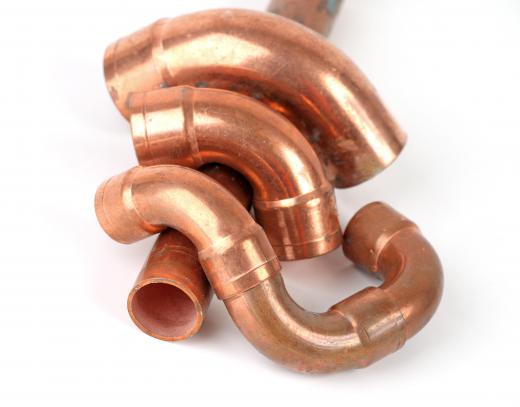Pipe sweating is a term that is used to mean a couple of different things. Cool pipes attract the humidity in the air and cause condensation to form on the exterior, for example, causing "sweat." Plumbers also use this term to refer to a specific way of soldering pipes together.
When someone has a glass of cold liquid, he or she may notice that it "sweats" when it’s hot outside. Pipes can do the same thing, particularly when the air is very humid, as the water vapor in the air builds up on the outside of the cooler pipes. When this is a problem, a dehumidifier can be used in a basement or wherever there is a problem so that water doesn't build up and drip.

Another method of reducing pipe sweating is to insulate the pipes. Foam tube insulation is available for this purpose at most hardware stores, and it usually just needs to be measured and cut to the right size. The insulation has a slit all the way down one side, so that it can fit around the pipes without a plumber or homeowner having to disconnect anything.

In a similar phenomenon, sometimes the outside of a toilet tank will sweat as well. Although insulation can be used to reduce this problem, another solution is to install an anti-sweat valve. The valve mixes a little hot water with the water in the tank, keeping it from getting cold enough to cause the tank to sweat.
For a plumber, however, pipe sweating has an entirely different meaning. It's actually is a trade term for a way of soldering pipes together with a propane torch. The copper pipes to be joined are heated at the juncture point, and then solder — a metal compound that is heated and used like glue between the two pipes — is applied. This technique can be a tricky venture for beginners, and it often takes a little while for a novice to get the feel of it.
